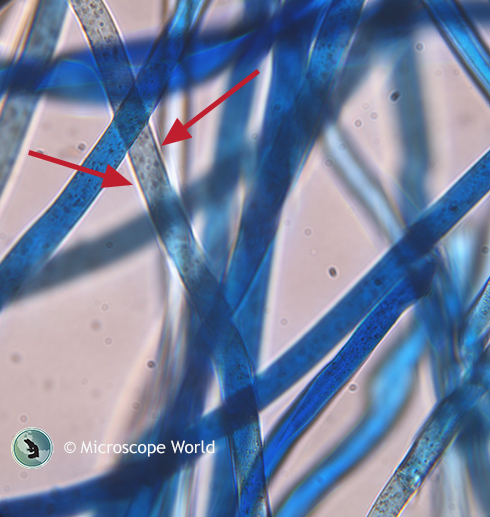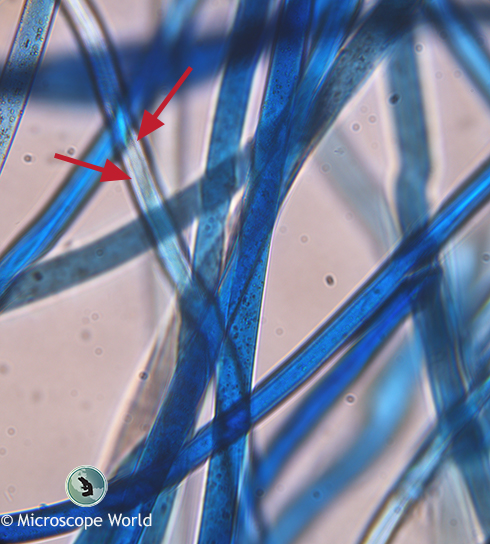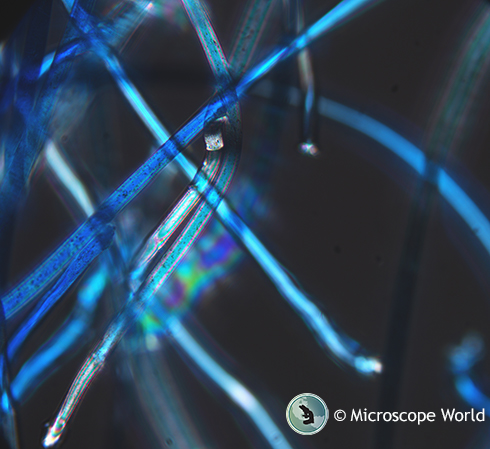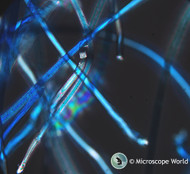Fiber Analysis under the Microscope
May 9th 2018
The American Association of Textile Chemists and Colorists (AATCC) has developed numerous standards for the performance of test methods related to the textile industry. AATCC Test Method 20 and Test Method 20A are two methods dealing with fiber analysis which require the use of a microscope.
The methods themselves are quite fascinating. Method 20 has all sorts of qualitative procedures to help identify fabric, including a burning test (observe whether the fibers melt or shrink, whether it continues to burn after removing the flame, how the smoke smells, and what the resulting ash looks like), a stain test, solubility test, and a melting point test.
Being "microscope people", we thought we would give the microscope-related procedures a try. Today we are trying section 9.4 Refractive Index.
We pulled out our Textile Exam Microscope for AATCC20 and AATCC 20A test methods. The base of this textile exam microscope is the R40POL polarizing microscope. Following the directions found in Test Method 20, section 9.4, we put some fibers on a glass microscope slide along with a couple drops of immersion oil, covered it with a glass cover slip, and placed it on the specimen stage, aligned parallel to the polarizer (6-12 o'clock, just as it says in section 9.4.2).
At this point, with the analyzer pulled out, we are looking at the outer edge of the fiber, paying attention to which direction the light that is refracting through the fibers moves. Because our fibers are not completely round, section 9.4.4 suggests we look for the Becke line, which is a bright line that is settled either just inside or just outside the specimen when you are not quite focused. By watching which direction the line moves as we change our focus level from too far to too close we can tell whether the refractive index of the fiber is higher or lower than the oil it is immersed in.
Here is what we saw under the microscope. With the low focus (bottom of the specimen), the Becke line is just outside the fiber as shown with the red arrows below.

As we move the focus up to the top of the specimen, the Becke line moved to the inside of the fiber, as shown by the red arrows in the image below.

What does all that mean? Since the Becke line moves towards the medium with a higher refractive index as the focus is raised, and our oil has a refractive index of 1.51, we know that the fiber has a refractive index greater than that. Table IV-Physical Properties of Fibers, of Test Method 20 gives the refractive index of a number of fibers.
Okay full disclosure: we snipped these fibers from a running shirt here in our warehouse, so we know it is polyester based on the tag. According to Table IV, polyester has a refractive index of 1.71 to 1.73. So our test results are consistent with what we would expect; the Becke line moved from the oil into the fibers.
For our next technique we rotated the specimen stage 45º and pushed in the analyzer, as described in 9.4.6. What we are checking here is whether the fiber has strong birefringent properties. If it does, it will be bright against the black, cross-polarized background. If it doesn't, you will not be able to easily make out the fiber. Here is what we saw:

Again, we referred Table IV to see what kind of result we should have seen with polyester: intense birefringence. Yes, I'd say that we got that!
Ultimately there are many different tests within Test Method 20 which the AATCC suggests in order to identify an unknown fabric. It is called Fiber Analysis: Qualitative because the information you are gaining (brightness, odor, appearance, etc.) is somewhat subjective, i.e., it takes a lot of experience to become an expert at textile identification. As for us, I think we will stick with being microscope experts.
This microscope has been set up to meet AATCC 20-20A Textile Exam Standards.
If you have questions regarding fiber analysis and setting up a microscope to meet AATCC Test Method 20 or 20A, contact Microscope World and we will be happy to help.





